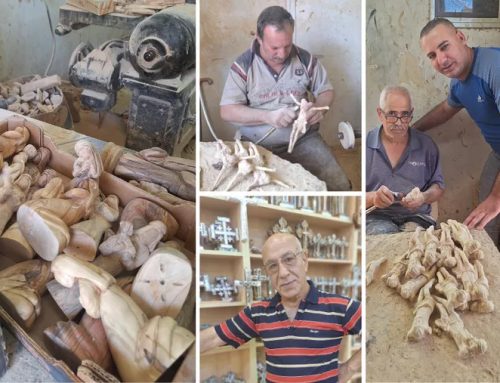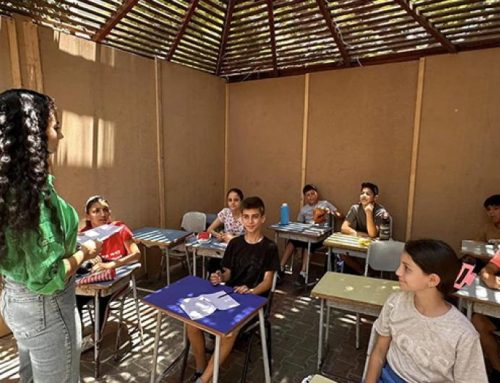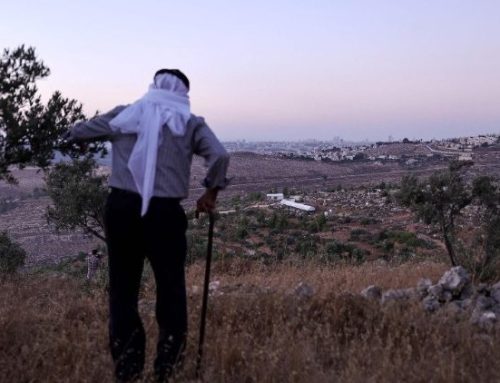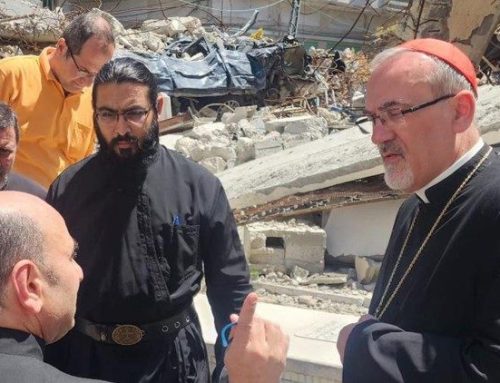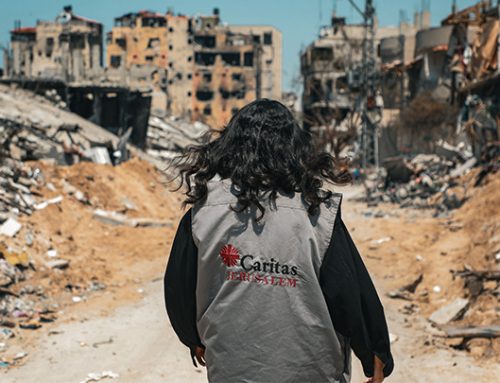Living the Holy Week in the places of the Passion, Death and Resurrection of Christ is a very special moment. In fact, it is in Jerusalem, that the places of the Christian faith are located and it is not surprising that every year thousands of believers and pilgrims gather here to follow the numerous celebrations that lead from the Mount of Olives to the Holy Sepulchre.
Palm Sunday
On the morning of Palm Sunday, there is a festive atmosphere in Jerusalem. From the doors of the Basilica of the Holy Sepulchre you can hear solemn chants in Latin. Inside, His Beatitude Pierbattista Pizzaballa is seated in front of the Holy Sepulchre, distributing palms to the faithful and introducing the Mass. The darkness of the Basilica is suddenly coloured by the red of the priests’ tunics, the blue of the nuns’ veils and the green of the palms. The religious men and women walk around the Holy Sepulchre for three times holding the palm branch in one hand and the Gospel in the other.
In the early afternoon, the streets of Jerusalem welcome a second procession of palms, this time under the sky. Thousands of worshippers and pilgrims armed with palms make their way from the sanctuary of Bethphage, which is the place where the disciples found the donkey used by Jesus to enter Jerusalem, to the Old City. All the people sing and the youngsters dance to the rhythm of guitars, trumpets and drums accompanying the procession. Halfway down the street, a small group of boys sing songs with bagpipes. On that day, Christians do not go unnoticed. During the ascent, some pilgrims stop to admire the Old City from above, take a few selfies and point out to their companions the places they know. With the singing of “Hosanna in excelsis Deo”, the joyful procession resumes its journey to the Lions’ Gate.
In the evening of the following day, they meet again in Bethany for the Eucharistic celebration. Fr. Francesco Patton blesses the oils, aromas and nard that he will place on the hands of the priests on Holy Thursday.
The following days are characterized by numerous masses and solemn processions.
The exception of the Holy Thursday
On Wednesday, the appointment for the faithful is at the Holy Sepulchre, because tradition states that on this day the column to which Jesus was tied while being scourged is exposed and venerated.
On Holy Thursday, the Church of Jerusalem enters, together with that of the whole world, into the Easter Triduum. Early in the morning, the faithful and pilgrims can attend the special blessing of the sacred oils for catechumens, priests and the sick in front of the Wayside Shrine of the Holy Sepulchre. The liturgy of the day is presided over by the Latin Patriarch of Jerusalem, H.B. Pierbattista Pizzaballa, who, at the end of the liturgy, washes the feet of 12 parishioners. It is in this day, in fact, that the evangelical episode of the Last Supper and the Washing of the feet is remembered. Tradition places these events in the Upper Room, located on Mount Zion in Jerusalem. In the afternoon, the doors to the liturgy are exceptionally opened in the room where Jesus dined for the last time with his disciples. In fact, the Upper Room, property of the State of Israel since 1948 (a tradition says that King David is buried underneath), is not allowed to celebrate Mass and the liturgy is simple and essential, but very intense at the same time. After reciting the readings and surrounded by the faithful, the Custos Francesco Patton blesses the water from the jugs that he will use to wash the feet of twelve other friars.
At 9pm, the procession finds itself at the Gethsemane where the Holy Hour is celebrated in the Garden of olives in order to meditate on the agony of Jesus. After two hours, people assist to the procession up to the palace of Caifa, that remembers the arrest of Jesus.
The peculiarity of the Holy Saturday
On Holy Friday, the procession meets on the Via Dolorosa to perform the Via Crucis. Faithful and religious touch all the stations until they reach the Holy Sepulchre.
In the evening, at the Basilica of the Holy Sepulchre, on the site where Christ died on the cross, there is the funeral procession. This is a truly unique moment, because in no other country in the world is a similar rite still taking place: two friars remove the crown of thorns and the nails from the statue depicting Christ on the cross and then place it in the shroud. Afterwards, the Custodian of the Holy Land sprinkles the shroud with oils and incense and leads the procession to the Sepulchre, where the image of Christ is placed.
On Saturday morning, in the Basilica of the Holy Sepulchre, a unique event takes place: at the first light of day, Jerusalem celebrates the Resurrection of Christ. This is the privilege that the Church in the Holy Land has every year for reasons related to the Status Quo. All the priests are dressed in white and His Beatitude Pizzaballa celebrates the liturgy. After the reading of seven readings and seven psalms from the Old Testament, the friars of the Custody of the Holy land ring the bells in celebration. The Easter Gospel is proclaimed before the entrance to the empty tomb. As on the following day, Sunday morning, when a cloud of incense welcomes the Patriarch of Jerusalem of the Latins who celebrates the Pontifical Mass and leads the solemn procession around the shrine.
Emmaus al-Qubeibeh
The village of Emmaus is the site of one of Christ’s first appearances after the Resurrection. In the Holy Land, Franciscans celebrate the apparition to two disciples on Angel Monday at Emmaus al-Qubeibeh, at the Sanctuary of the Manifestation. Fra Francis Patton repeats the gesture of the bread broken by Jesus in memory of hif manifestation to Simeon and Cleophas.
https://wwww.proterrasancta.org/


